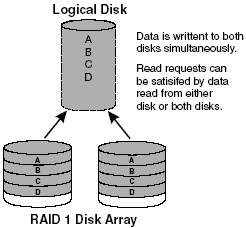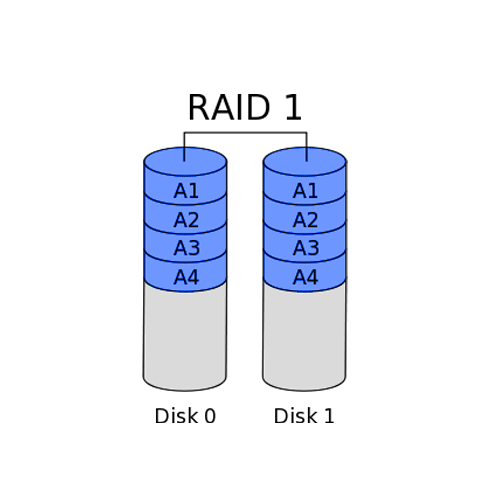What Is RAID?
As it was originally proposed, the acronym RAID stood for Redundant Array of Inexpensive Disks. However, it has since come to be known as Redundant Array of Independent Disks. RAID was originally described in the paper "A Case for Redundant Arrays of Inexpensive Disks (RAID)" written by three University of California Berkeley researchers: David Patterson, Garth Gibson, and Randy Katz. The concept was presented at the 1988 conference of the ACM Special Interest Group on Management of Data (SIGMOD). In the original Berkeley paper there were five RAID levels (1-5). RAID-6 was added later as an enhancement for RAID-5. In time other levels have been implemented by various companies using the concepts described in the original proposal. These include RAID-0 (striping without redundancy), and multilevel RAID (striping across RAID arrays), and others variants.
The Levels of RAID
| RAID 0 | RAID 1 | RAID 10 (also known as RAID 0/1) |
RAID 5 | |
| Description | Data striping (no data protection) |
Disk mirroring | RAID 0 and RAID 1 combined | Data striping with distributed parity |
| Minimum # of Drives | Two | Two | Four | Three |
| Benefit | Highest performance | Data protection through redundancy | Highest performance with data protection | Best balance of cost/ performance/ data protection |
RAID 1 (Mirroring)
Provides data protection by duplicating all data from a primary drive on a secondary drive. For Highest performance, the controller must be able to perform two concurrent separate Reads per mirrored pair or two duplicate Writes per mirrored pair.
- RAID Level 1 requires a minimum of 2 drives to implement
- One Write or two Reads possible per mirrored pair
- Twice the Read transaction rate of single disks, same Write transaction rate as single disks
- 100% redundancy of data means no rebuild is necessary in case of a disk failure, just a copy to the replacement disk
- Transfer rate per block is equal to that of a single disk
- Under certain circumstances, RAID 1 can sustain multiple simultaneous drive failures
- Simplest RAID storage subsystem design
- Highest disk overhead of all RAID types (100%) - inefficient
- Typically the RAID function is done by system software, loading the CPU/Server and possibly degrading throughput at high activity levels. Hardware implementation is strongly recommended
- May not support hot swap of failed disk when implemented in "software"

Recommended Applications
- Accounting
- Payroll
- Financial
- Any application requiring very high availability




